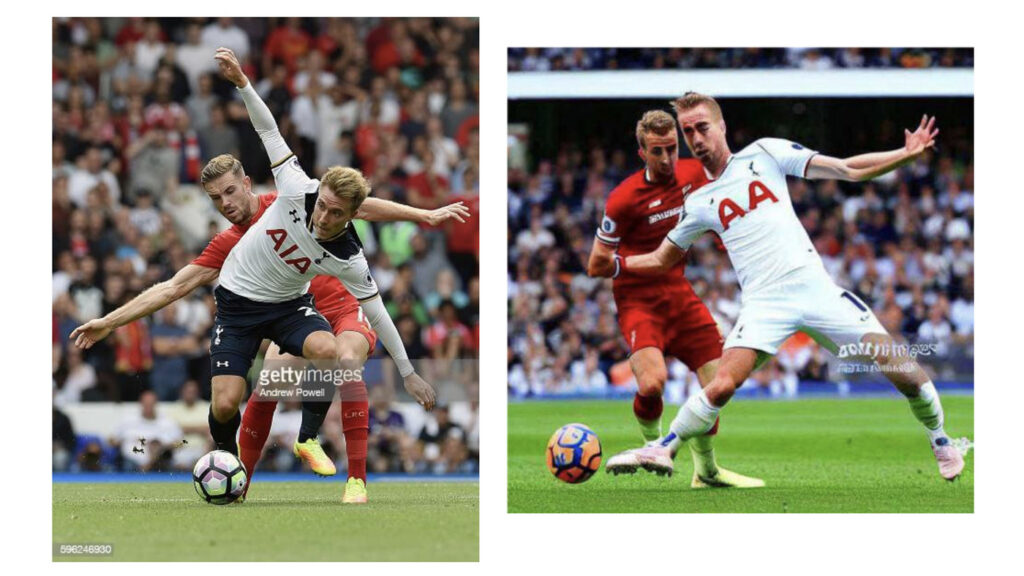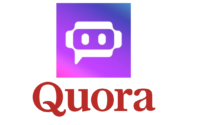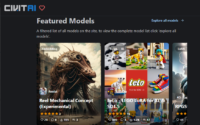After Rejecting Adobe, Getty AI Disappoints Photographers
Getty Images is one of the most well-known stock photo sites on the internet, and Getty AI threatens to alter forever how we view it.
Stock photography is a tricky business often looked down upon by traditional artists and their AI counterparts. But it’s also one of the ways both up-and-coming and established artists, illustrators, designers, and photographers make some spare cash on the side.
Although often exploitative, the microstock game can be profitable, but generative AI threatens to make it harder for anybody to reach the upper echelons.
In September 2022, Getty Images announced a site-wide ban on generative AI images, drawing praise from human creatives. However only a month later, it invested in an artificial intelligence startup and, by September 2023, announced its generative AI tool trained on its extensive archive of images.
With all significant stock image sites now actively training generative AI, there’s no escaping the inevitable. But is Getty on the right side of history?
Let’s dive in.
TL;DR
- Getty Images is a $2 billion public company and one of the largest stock photography sites on the internet, with nearly 500 million images in its archive generating over $900 million a year in revenue.
- In September 2022, Getty Images banned AI-generated images from being upload to its owned platforms, echoing a similar ban from Shutterstock.
- In October 2022, Getty Images announced an estimated $2 million minority stake in Bria AI.
- In January 2023, Getty Images sued Stability AI for copyright and trademark infringement for training its AI on 12 million of its images.
- In September 2023, Getty Images reiterated its stance against user-uploaded generative AI, specifically calling out Adobe Firefly as a banned tool.
- Less than a week later, Getty announced a generative AI tool trained on its archive in partnership with NVIDA and BRIA AI.
Background
About Getty Images
Getty Images is an American company that provides stock images, editorial photography, video, and music. Founded in 1995 by Mark Getty and Jonathan Klein, the company expanded its reach globally, focusing on three markets: creative professionals, media, and corporate clients.
It has a digital library of over 477 million assets across all subsidiaries (including iStock) and receives over 2.3 billion searches from 170 million users annually on its website.
The company was bought by Hellman & Friedman for $2.4 billion in 2008, then later by Carlyle Group in 2012, and was finally acquired back by the Getty family in 2018. In July 2022, Getty Images went public again on the NYSE via SPAC merger.
In terms of copyright enforcement, Getty Images has been criticized for aggressive tactics, like sending demand letters seeking substantial monetary damages for copyright infringement.
Most recently, the company declined a $4 billion acquisition bid from activist investor Trillium Capital in April 2023 and announced a partnership with Nvidia and BRIA AI to launch a Generative AI tool in September 2023.
Getting the Facts on Getty
Although Getty Images was founded in 1995, its legacy extends much further back in history to J Paul Getty Sr.
J. Paul Getty Sr. was a prominent American-born British petroleum magnate who founded the Getty Oil Company in 1942. Born in Minneapolis, he was the son of pioneer oilman George Getty. By 1957, Fortune magazine labeled him the richest living American, and in 1966, the Guinness Book of Records declared him the world’s wealthiest private citizen with an estimated worth of $1.2 billion. At his death in 1976, his net worth had surged to more than $6 billion.
Getty’s fortune began when his father gave him $10,000 to invest in the family’s oil interests in Oklahoma. He struck oil in 1915, setting him on the path to becoming a millionaire. Despite setbacks, including inheriting just a fraction of his father’s fortune due to family differences, Getty persevered. He astutely invested during the Great Depression, acquiring multiple oil corporations and eventually merging these into Getty Oil in 1967.
Apart from his business achievements, Getty was an avid art collector. His collection eventually formed the foundation of the J. Paul Getty Museum in Los Angeles, with over $661 million of his estate being bequeathed to the museum. The J. Paul Getty Trust, founded by him in 1953, is now the world’s richest art institution and runs the J. Paul Getty Museum Complexes.
Getty’s ventures in the Middle East, especially his deal with Ibn Saud for the Saudi Arabian Neutral Zone, amplified his wealth tremendously. Beyond business, Getty’s personal life was tumultuous, with five marriages and divorces, and five children.
Getty was known for his frugality, demonstrated most infamously when he negotiated the ransom for his kidnapped grandson in 1973. Then 16 years old, John Paul Getty III was abducted from Rome’s Piazza Farnese, and his mother Gail Harris–who was no longer married to the boy’s father–received a ransom demand for $17 million. Rather than pay, Getty blew it off, stating, “if I pay one penny now, I’ll have 14 kidnapped grandchildren.”
After four months, the kidnappers mailed a box to the local newspaper in Rome containing Getty III’s severed ear and a lock of his bloodied hair, demanding a $3 million ransom . Getty agreed to pay a $2.2 million ransom, the maximum sum allowed for a tax write off, and loaned the remaining $800,000 to his son with interest. His grandson developed a drug addiction from the trauma that inevitably led to a debilitating stroke in 1981 and his 2011 death at the age of 54.
Carrying on the Getty Image
Mark Getty is the younger brother of John Paul Getty III, and he was 12 years old when his brother was kidnapped. The internet was growing in popularity in 1995, and he partnered with Jonathan Klein to start Getty Images with his father’s money.
The money was immediately used to purchase several stock photo sites, and it followed this acquisition growth strategy throughout its 28-year history. It also earned a reputation for aggressively putting legal pressure on people over copyright infringement for using its images.
Getty Images, through its subsidiary License Compliance Services (LCS), is notorious for sending demand letters to individuals and businesses suspected of using Getty-owned content without a license. These letters often demand payment of licensing fees and threaten legal action, even in cases where the use may be legitimate or where there may be confusion about the actual ownership of the image.
This aggressively litigious stance led to the company being targeted by multiple lawsuits in the 2010s. The age of AI brought a whole new set of problems, however.

Getty Images instituted a ban on the upload and sale of artwork created using AI art tools, such as DALL-E, Midjourney, and Stable Diffusion in September 2022.
The move made Getty the most sizeable user-generated content platform to enforce such a restriction. CEO Craig Peters cited concerns regarding the legal implications of AI-generated content and the intent to safeguard their clients. Peters highlighted potential issues related to copyright, image metadata, and the individuals depicted in AI-generated imagery.
It went a step further in January 2023 when it initiated a lawsuit against Stability AI, the developers behind the AI art tool Stable Diffusion, for alleged copyright infringement. The stock photo giant believes Stability AI illegally copied and utilized millions of copyrighted images to train its software.
According to Getty, Stability AI’s actions lacked permission or consideration, and it expressed concerns over the commercial deployment of Stability’s offerings, which the company believes is not protected by fair dealing in the UK or fair use in the US. Many AI tools, including Stable Diffusion, use images from the web as training data, which often raises copyright concerns, and this seemed like a strong defense against exploitation.
Getty Images’ lawsuit aims to address the intellectual property challenges reminiscent of the early days of digital music. Peters compared the current situation to the evolution from Napster to Spotify, emphasizing the need for agreements that respect intellectual property rights. Getty Images’ primary objective is not to seek financial damages but to establish a new legal framework, preferably one that includes favorable licensing terms for Getty.
While some AI image tools refrain from revealing their data sources, Stable Diffusion’s dataset is open-source, and an independent analysis revealed a significant presence of images from Getty and other stock sites. Even as companies like Stability AI begin to make allowances for content creators, the underlying legal challenges persist. Peters emphasized the need for collaboration and respect for intellectual property, likening the desired outcome to Spotify’s negotiated agreements with music rights holders.
The company further cemented its stance by specifically naming Adobe Firefly AI in its reiterated ban on user-submitted generative AI images. Although lauded by the creative community, it soon became clear Getty was simply protecting itself at the risk of its contributors and customers, something that should have been made clear with its investment in Bria AI.
In September, Getty Images, in collaboration with Nvidia, introduced “Generative AI by Getty Images,” a tool designed to produce images using Getty’s expansive library of licensed photos. This AI tool, which is exclusively trained on Getty Images’ vast collection and leverages NVIDIA Picasso, offers users complete copyright indemnification.
The AI’s quality was impressive, generating images that appeared realistic and even tricking individuals when compared to actual photos. Getty’s platform provides clear benefits over other generative AI tools, particularly in the rendering of human figures. However, it imposes limitations on the kind of images that can be generated, refraining from recreating real-life events or specific real-world personalities.
Access to this AI tool will be available via the Getty Images website and will have its own pricing structure separate from the standard Getty Images subscription. Every image produced will carry the Getty watermark, indicating its AI-generated origin.
It’s unclear exactly how Getty will compensate its users, but Shutterstock and Adobe set a low bar with one-time payments averaging only $10 among their contributors. This leaves photographers and artists wondering how sustainable stock image residual payments will be moving forward.
Moving Forward from Getty
Getty Images, once a bastion for traditional photographers and illustrators, took a dramatic turn in its stance on artificial intelligence. Only a year after instituting a ban on AI-generated images, showing solidarity with human creatives, Getty introduced its own AI tool, trained on its vast archive. This pivot raises crucial questions about the future of creative professions in the age of AI.
While Getty’s embrace of AI promises innovation and efficiency, it also presents a dichotomy: championing human creativity while simultaneously propelling AI to the forefront while exploiting its own contributors. Creatives now face a landscape where they must not only compete with each other but also with machines trained on their work.
The evolution of Getty Images serves as a poignant reflection of the broader challenges and opportunities that lie ahead for the world of creative professionals.



